#NodeJS Api Development
Explore tagged Tumblr posts
Text
2024's Top Backend Frameworks: What You Need to Know
Discover the top Backend Frameworks of 2024, designed for maximum performance and scalability." Stay ahead of the competition with innovative tools designed to match the demands of today's technology landscapes.

0 notes
Text
Progress:
Okay so the authentication for spotify is hard for me to understand and requires user authentication, then making a token request that while expire in an hour. So i focused on what I did know how to do and what I had access to token wise. The Spotify developer home page has a temporary access token for demos. I took that token and made a function to make get request to the API and two functions for top tracks and top artists. Then made some functions to print them in my terminal. Here is what my end product looked like in the terminal.


The data for tracks is proving to just show a years worth of listening even though I specified long_term in my get request.
Here is my code:

I tried just doing track.artist but Spotify handles that as multiple artists so I had to handle them as such.
Next Steps: Tackling the user authentication and token requests and including it in this code.
(Also yes I know that is a concerning amount of My Chemical Romance tracks. I had my MCR phase strike up again with a passion last October and I am still balls deep in it.)
#coding#baby coder#web developers#spotify api#software engineering#web development#javascript#nodejs#node-fetch#terminal app#visual studio code#vs code#backend#frontend#my chemical romance#the weakerthans#u2#modern baseball#pup the band#oasis#wilco#misfits#descendents#programmer#programming#github#developers
11 notes
·
View notes
Text
#full stack development course with placements#mern stack development course in pune#software development#web development#rest api#reactjs#frontenddevelopment#learn to code#javascript#frontend developer#webdesign#htmlcoding#htmltemplate#html css#html#css#code#html5games#jquery#nodejs#expressjs
2 notes
·
View notes
Text
GraphQL vs REST API in Node.js: Which One Should You Use?

🔗 APIs are the backbone of modern web development, but choosing the right one can feel overwhelming. Let’s break it down and make your decision easier!
🌟 REST API: The Traditional Powerhouse
REST (Representational State Transfer) has been the gold standard for years. Here's why: ✅ Simplicity: Easy to implement and understand. ✅ HTTP Protocol: Leverages HTTP methods like GET, POST, PUT, DELETE. ✅ Widely Supported: Works seamlessly across platforms. But REST has a downside — over-fetching or under-fetching data, especially when your clients need only a specific subset of information.
🚀 GraphQL: The Modern Challenger
GraphQL, developed by Facebook, is revolutionizing API development. Here’s what makes it unique: ✨ Single Endpoint: One endpoint to rule them all! ✨ Client-Controlled Data: Fetch exactly what you need, no more, no less. ✨ Strong Typing: Built-in schema ensures data consistency. ✨ Flexibility: Perfect for complex queries and large-scale applications. However, it requires a steeper learning curve and might be overkill for simple use cases.
🤔 Which One Should You Use?
Use REST API if your project is simple, time is limited, or you’re working with a small dataset.
Choose GraphQL if your project is complex, you need efficient data fetching, or you're building a large-scale application.
💡 Pro Tip: Combine the best of both worlds! REST and GraphQL can coexist, providing flexibility where needed.
👉 Ready to make your Node.js development smoother? Whether it's GraphQL or REST, the right choice will save you time and effort.
Visit for More: GraphQL vs REST API in Node.js: Which One Should You Use?
1 note
·
View note
Text
Why to Use Graphql Explained with Example for API Developers
Full Video Link - https://youtube.com/shorts/hO2vbzF4cNk Hi, a new #video on #graphql usage for #microservice #api #developers is published on #codeonedigest #youtube channel. @java #java #awscloud @awscloud #aws @AWSCloudIndia #Cloud #CloudComp
GraphQL is a syntax for requesting data. It’s a query language for APIs. It lets you specify exactly what is needed, and then it fetches just that — nothing more, nothing less. GraphQL is the solutions to common REST issues like over fetching and multiple network request. REST is an API design architecture that has become the norm for implementing web services. It uses HTTP to get data and…
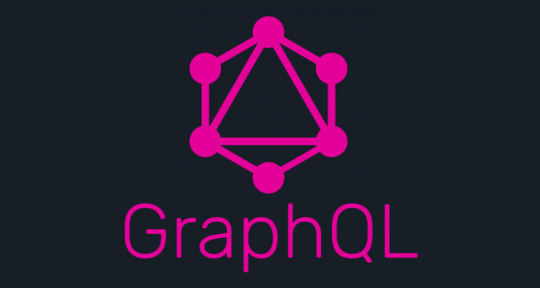
View On WordPress
#graphql#graphql api#graphql api calls#graphql api developers#graphql api java#graphql api platform#graphql api project#graphql developer#graphql example#graphql example api#graphql example java#graphql example spring boot#graphql example tutorial#graphql explained#graphql explained in 100 seconds#graphql tutorial#graphql use#graphql vs rest#rest api limitations#use graphql in nodejs#use graphql in postman#why graphql
0 notes
Text
My open-source decentralized core
I asked before if people would love to hear about my open-source projects, and I got a lot of really great responses, so here we go...
About the project
I've been working on a NodeJS project lately, it's a decentralized real-time data network integrated with AI policies and other cool security features, It's only been a few weeks under development and in its early stages, but I hope we get somewhere with it.
The project is called ddeep-core, and it's supposed to be a tool under the ddeep ecosystem we are building in Multi Neon (my startup).
This core is supposed to be a more secure way to sync, save, and process decentralized graph data in real time based on data subscriptions and policies.
link to the project
How it works
First of all, a peer (device or browser) would subscribe to some data (a node in the graph database) by opening a connection with the core and sending a get message, and if the policies applied to that node are satisfied, it will add a real-time listener to that node and send back the current node's data, otherwise, it just ignores it.
Now every time someone updates that node's data by sending a put message, that peer will receive a real-time update.
well, these policies can be AI-powered... so for example, if you want to prevent any angry inputs from being added to the network under the 'posts' node, you can do so in 3 lines of code easily.
ddeep-core can be a fully decentralized solution, and if you want to save data to storage, you can do that too with features like recovery checkpoints...
It supports IP whitelisting to prevent cross-site attacks and that kind of stuff, It manages the data well by resetting the graph and listeners every while, and with each peer connection close.
There is no API for this yet, but it works perfectly with Gun.js or just by sending requests to it, we are currently working on an interface API to communicate with the core in a more efficient way.
So, is it good ??
So far the results are pretty good, if we are talking about stability we still have a long road to go with more testing, and if we are talking about performance, It's good so far.
ddeep-core is good when it comes to performance, as it ignores a lot of things when processing connections and messages, for example, if the core has to deal with a put request, and has to save data to storage too, it won't wait for the saving process to finish, it will just ignore if it's done or not and send the updated data to all peers listening to it (after processing the policies for sure).
I focused a lot on the data structure of listeners and peers, and I hope I got it well as it really affects the performance a lot.
#technology#software engineering#coding#decentralization#software#open source#programming#artificial intelligence#backend
4 notes
·
View notes
Text
You can learn NodeJS easily, Here's all you need:
1.Introduction to Node.js
• JavaScript Runtime for Server-Side Development
• Non-Blocking I/0
2.Setting Up Node.js
• Installing Node.js and NPM
• Package.json Configuration
• Node Version Manager (NVM)
3.Node.js Modules
• CommonJS Modules (require, module.exports)
• ES6 Modules (import, export)
• Built-in Modules (e.g., fs, http, events)
4.Core Concepts
• Event Loop
• Callbacks and Asynchronous Programming
• Streams and Buffers
5.Core Modules
• fs (File Svstem)
• http and https (HTTP Modules)
• events (Event Emitter)
• util (Utilities)
• os (Operating System)
• path (Path Module)
6.NPM (Node Package Manager)
• Installing Packages
• Creating and Managing package.json
• Semantic Versioning
• NPM Scripts
7.Asynchronous Programming in Node.js
• Callbacks
• Promises
• Async/Await
• Error-First Callbacks
8.Express.js Framework
• Routing
• Middleware
• Templating Engines (Pug, EJS)
• RESTful APIs
• Error Handling Middleware
9.Working with Databases
• Connecting to Databases (MongoDB, MySQL)
• Mongoose (for MongoDB)
• Sequelize (for MySQL)
• Database Migrations and Seeders
10.Authentication and Authorization
• JSON Web Tokens (JWT)
• Passport.js Middleware
• OAuth and OAuth2
11.Security
• Helmet.js (Security Middleware)
• Input Validation and Sanitization
• Secure Headers
• Cross-Origin Resource Sharing (CORS)
12.Testing and Debugging
• Unit Testing (Mocha, Chai)
• Debugging Tools (Node Inspector)
• Load Testing (Artillery, Apache Bench)
13.API Documentation
• Swagger
• API Blueprint
• Postman Documentation
14.Real-Time Applications
• WebSockets (Socket.io)
• Server-Sent Events (SSE)
• WebRTC for Video Calls
15.Performance Optimization
• Caching Strategies (in-memory, Redis)
• Load Balancing (Nginx, HAProxy)
• Profiling and Optimization Tools (Node Clinic, New Relic)
16.Deployment and Hosting
• Deploying Node.js Apps (PM2, Forever)
• Hosting Platforms (AWS, Heroku, DigitalOcean)
• Continuous Integration and Deployment-(Jenkins, Travis CI)
17.RESTful API Design
• Best Practices
• API Versioning
• HATEOAS (Hypermedia as the Engine-of Application State)
18.Middleware and Custom Modules
• Creating Custom Middleware
• Organizing Code into Modules
• Publish and Use Private NPM Packages
19.Logging
• Winston Logger
• Morgan Middleware
• Log Rotation Strategies
20.Streaming and Buffers
• Readable and Writable Streams
• Buffers
• Transform Streams
21.Error Handling and Monitoring
• Sentry and Error Tracking
• Health Checks and Monitoring Endpoints
22.Microservices Architecture
• Principles of Microservices
• Communication Patterns (REST, gRPC)
• Service Discovery and Load Balancing in Microservices
1 note
·
View note
Text
System Shock 2 in Unreal Engine 5
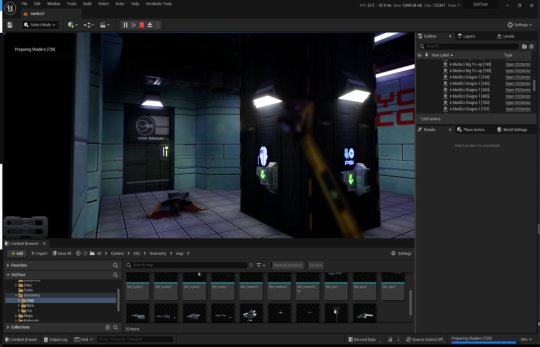
Tools, tools, tools
Back when I worked in the games industry, I was a tools guy by trade. It was a bit of a mix between developing APIs and toolkits for other developers, designing database frontends and automated scripts to visualise memory usage in a game's world, or reverse engineering obscure file formats to create time-saving gadgets for art creation.
I still tend to do a lot of that now in my spare time to relax and unwind, whether it's figuring out the binary data and protocols that makes up the art and assets from my favourite games, or recreating systems and solutions for the satisfaction of figuring it all out.
A Shock to the System
A while back I spent a week or so writing importer tools, logic systems and some basic functionality to recreate System Shock 2 in Unreal Engine 5. It got to the stage where importing the data from the game was a one-click process - I clicked import and could literally run around the game in UE5 within seconds, story-missions and ship systems all working.
Most of Dark engine's logic is supported but I haven't had the time to implement AI or enemies yet. Quite a bit of 3D art is still a bit sketchy, too. The craziest thing to me is that there are no light entities or baked lightmaps placed in the levels. All the illumination you can feast your eyes on is Lumen's indirect lighting from the emissive textures I'd dropped into the game. It has been a fun little exercise in getting me back into Unreal Engine development and I've learnt a lot of stuff as usual.
Here is a video of me playing all the way up to the ops deck (and then getting lost before I decided to cut the video short - it's actually possible to all the way through the game now). Lots of spoilers in this video, obviously, for those that haven't played the game.
youtube
What it is
At it's core, it's just a recreation of the various logic-subsystems in System Shock 2 and an assortment of art that has been crudely bashed into Unreal Engine 5. Pretty much all the textures, materials, meshes and maps are converted over and most of the work remaining is just tying them together with bits of C++ string. I hope you also appreciate that I sprinkled on some motion-blur and depth of field to enhance the gameplay a little. Just kidding - I just didn't get around to turning that off in the prefab Unreal Engine template I regularly use.
Tool-wise, it's a mishmash of different things working together:
There's an asset converter that organises the art into an Unreal-Engine-compatible pipeline. It's a mix of Python scripting, mind numbingly dull NodeJS and 3dsmaxscript that juggles data. It recreates all the animated (and inanimate) textures as Unreal materials, meshifies and models the map of the ship, and processes the objects and items into file formats that can be read by the engine.
A DB to Unreal converter takes in DarkDBs and spits out JSON that Unreal Engine and my other tools can understand and then brings it into the Engine. This is the secret sauce that takes all the levels and logic from the original game and recreates it in the Unreal-Dark-hybrid-of-an-engine. It places the logical boundaries for rooms and traps, lays down all the objects (and sets their properties) and keys in those parameters to materialise the missions and set up the story gameplay.
Another tool also weeds through the JSON thats been spat out previously and weaves it into complex databases in Unreal Engine. This arranges all the audio logs, mission texts and more into organised collections that can be referenced and relayed through the UI.
The last part is the Unreal Engine integration. This is the actual recreation of much of the Dark Engine in UE, ranging all the way from the PDA that powers the player's journey through the game, to the traps, buttons and systems that bring the Von Braun to life. It has save-game systems to store the state of objects, inventories and all your stats, levels and progress. This is all C++ and is built in a (hopefully) modular way that I can build on easily should the project progress.
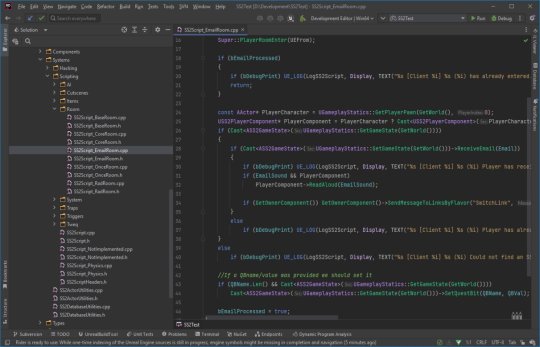
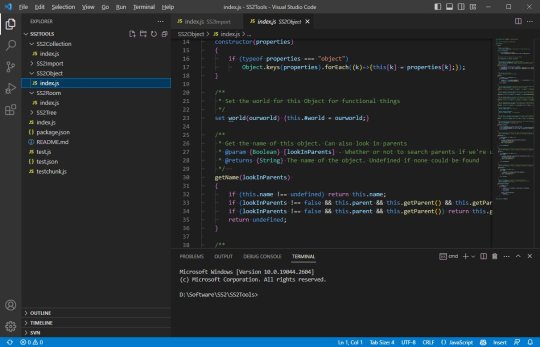
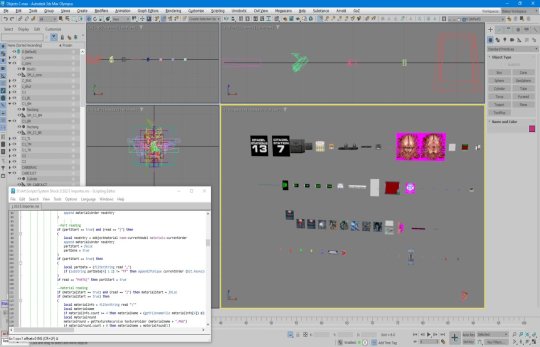
Where it's at
As I mentioned, the levels themselves are a one-click import process. Most of Dark engine's logic, quirks and all, is implemented now (level persistence and transitions, links, traps, triggers, questvars, stats and levelling, inventory, signals/responses, PDA, hacking, etc.) but I still haven't got around to any kid of AI yet. I haven't bought much in the way of animation in from the original game yet, either, as I need to work out the best way to do it. I need to pull together the separate systems and fix little bugs here and there and iron it out with a little testing at some point.
Lighting-wise, this is all just Lumen and emissive textures. I don't think it'll ever not impress me how big of a step forward this is in terms of realistic lighting. No baking of lightmaps, no manually placing lighting. It's all just emissive materials, global/indirect illumination and bounce lighting. It gets a little overly dark here and there (a mixture of emissive textures not quite capturing the original baked lighting, and a limitation in Lumen right now for cached surfaces on complex meshes, aka the level) so could probably benefit with a manual pass at some point, but 'ain't nobody got time for that for a spare-time project.
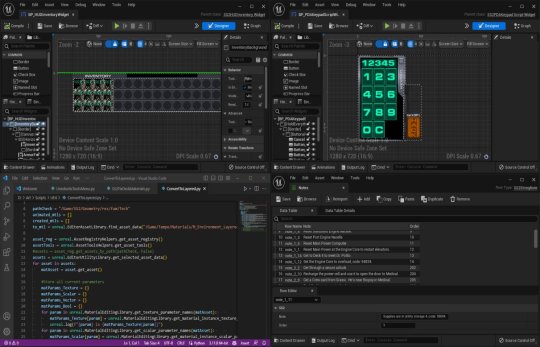
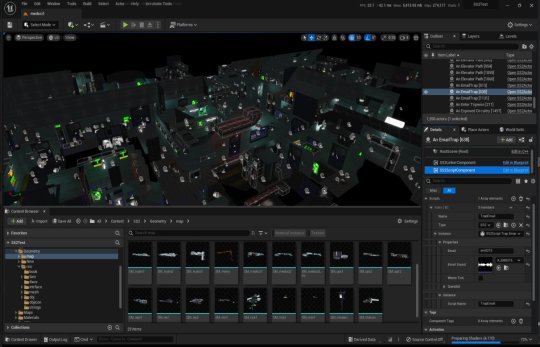
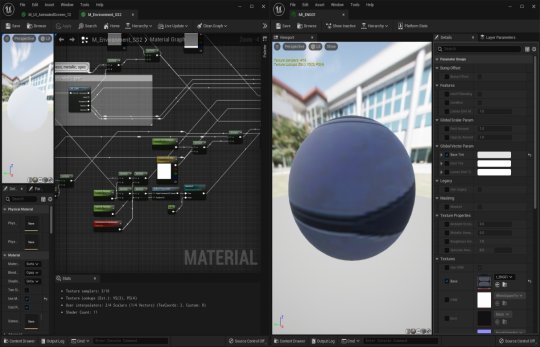

The unreal editor showcasing some of the systems and levels.
Where it's going
I kind of need to figure out exactly what I'm doing with this project and where to stop. My initial goal was just to have an explorable version of the Von Braun in Unreal Engine 5 to sharpen my game dev skills and stop them from going rusty, but it's gotten a bit further than that now. I'm also thinking of doing something much more in-depth video/blog-wise in some way - let me know in the comments if that's something you'd be interested in and what kind of stuff you'd want to see/hear about.
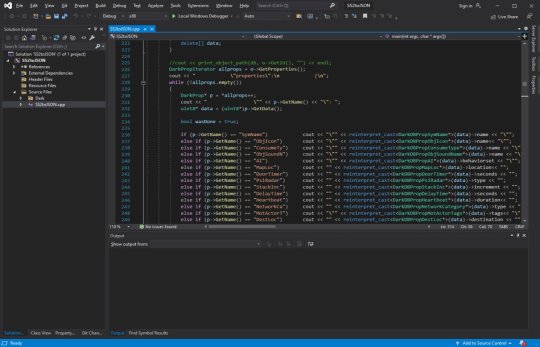
The DB to JSON tool that churns out System Shock 2 game data as readable info
Anyway - I began to expand out with the project and recreate assets and art to integrate into Unreal Engine 5. I'll add more as I get more written up.
#game development#development#programming#video game art#3ds max#retro gaming#unreal engine#ue5#indiedev#unreal engine 5#unreal editor#system shock 2#system shock#dark engine#remake#conversion#visual code#c++#json#javascript#nodejs#tools#game tools#Youtube
1 note
·
View note
Text
Senior Web Developer
+ years Technical Proficiency: Advanced knowledge and hands-on experience with: React, Node.js, TypeScript PHP and REST… knowledge and handson experience with React Nodejs TypeScript PHP and REST API microservices Serverless architecture and AWS… Apply Now
0 notes
Text
Senior Web Developer
+ years Technical Proficiency: Advanced knowledge and hands-on experience with: React, Node.js, TypeScript PHP and REST… knowledge and handson experience with React Nodejs TypeScript PHP and REST API microservices Serverless architecture and AWS… Apply Now
0 notes
Text
Why React JS Development is Ideal for Single Page Applications (SPAs)

In today’s fast-paced digital world, speed and performance are everything. That’s why more businesses are turning to React JS Development for building highly interactive Single Page Applications (SPAs). With its component-based architecture, virtual DOM, and high reusability, React JS ensures faster development, improved performance, and a seamless user experience.
The Power of React and Nodejs in SPA Development
When combined with Node.js, React JS Development becomes a powerhouse for building scalable and efficient SPAs. Node.js handles server-side operations while React takes care of the client-side, enabling a complete JavaScript-based tech stack. This pairing not only simplifies development but also ensures faster loading times, real-time updates, and better performance across devices.
Many developers leverage the combination of React and Nodejs to create dynamic, data-driven applications that require minimal server refresh. This full-stack synergy is what makes React-based SPAs a top choice in modern web application development.
Bootstrap Vs React - Which is Best Framework?
Designing an attractive and functional UI is a major part of SPA development. While Bootstrap has long been a favorite for rapid UI design, developers now often compare Bootstrap Vs React - which is best framework for SPA development.
Bootstrap provides pre-built UI components, making it ideal for quick prototypes. However, React’s modular, reusable components give developers the freedom to create highly customized interfaces. In the context of SPAs, React offers better performance and more scalability, making it the preferred choice among developers aiming for long-term flexibility.
React JS Development for Custom Web Application Development
No two businesses are alike, which is why React JS Development is often chosen for building tailored SPAs that meet specific business needs. Whether it’s a dashboard, eCommerce store, or content management system, React offers the flexibility to design applications that scale with your organization.
For businesses looking to invest in Custom Web Application Development, React's ecosystem supports state management (like Redux), API integrations, and dynamic content loading. These features ensure that the SPA is not only responsive but also intuitive and aligned with user expectations.
Book an Appointment
Ready to take your digital presence to the next level? Book an appointment with our React JS experts and find out how we can bring your SPA vision to life.
React JS and MEAN Stack Development Integration
While React JS is often paired with various backend technologies, one common and effective combination is seen in MEAN Stack Development. This stack includes MongoDB, Express.js, Angular (or React as a replacement), and Node.js. In many modern projects, developers substitute Angular with React for better component control and flexibility.
Integrating React JS Development into the MEAN stack allows for real-time functionality, faster page loads, and seamless single-page navigation—perfect for businesses looking for speed and performance in their applications.
Why SPAs and React JS are a Perfect Match
Single Page Applications need to be fast, dynamic, and interactive. React JS Development delivers on all fronts with features like:
Virtual DOM for rapid UI updates
Component-based architecture for better reusability
Declarative code that makes debugging easier
React’s ability to render components without refreshing the entire page ensures a smoother user experience. This is especially important for SPAs, where maintaining application state and providing instant feedback is crucial.
Real-World Examples of React JS in Action
Many industry leaders use React JS Development to build their SPAs. Platforms like Facebook, Instagram, and Airbnb rely on React for its efficiency and scalability. These applications are expected to handle millions of interactions per day, and React’s architecture helps make that possible.
These real-world applications show how investing in React JS Development can provide the foundation for a responsive and high-performing digital product.
Final Thoughts: React is the Future of SPA Development
React JS isn’t just a trend—it’s a long-term solution for businesses aiming to stay competitive. With its robust ecosystem, reusable components, and integration capabilities, React JS Development enables companies to build scalable, high-performance Single Page Applications efficiently.
Whether you're a startup or an enterprise, React empowers you to create engaging, user-centric experiences that drive results. Don't wait—book an appointment with our development team and start building your next-gen web application today.
0 notes
Text

Shopify App Development with Nodejs
I want to create an NodeJS Api Development which will fetch product list and detail from shopify and create individual discount code. but to do that I need to create a tunnel using admin token which will allow me to perform this action, but I'm not sure how and where to begin with. Any help will be great
0 notes
Text
Finally got OAuth working!!!!
The war is over. Figured out the hard way that OAuth makes the routes for you <3
Now I can start coming up with models to store the data from users. If anyone has any ideas on how I should make those relationships with other data tables for songs and artists let me know. I’m going to reblog this post with some of my own ideas.
I also have a login page and dashboard with hard coded data to get a sense of what I want the backend to supply. Good progress! Will also reblog with pictures of that.
#coding#software engineering#baby coder#web developers#web development#nodejs#ruby#spotify api#reactjs#ruby on rails#software development#full stack developer
4 notes
·
View notes
Text
How to Hire a Node.js Developer for Your Web Project in 2025

In 2025, it is more important than ever to build fast, scalable, and real-time web applications. Businesses in various industries use Node.js, a powerful JavaScript runtime, to create dynamic backend architecture to manage high concurrency with low response times. However, most importantly, you will need to find a good developer to bring this technology to life. But how do you hire the right Node.js developer to fit your project goals, timelines and budget?
In this blog, we will show you everything you need to know to hire dedicated NodeJs developers from trusted partner Jellyfish Technologies, and use advanced Nodejs development services for web applications in 2025.
Why Node.js Is Still Dominating in 2025
Before we dive into the hiring process, let's quickly understand why Node.js remains a top choice for backend technology:
Non-blocking I/O for real-time applications
Single programming language (JavaScript) in both front and back end
Huge ecosystem with npm (over 2 million packages)
Great scalability with microservices architecture
Strong community support and actively evolving (Node 20+)
Node.js can support the performance and flexibility that modern applications require, whether you're building a live chat app, a fintech dashboard, or an eCommerce platform.
Read also: Top Backend Technologies
Step-by-Step Guide to Hiring a Node.js Developer in 2025
Clarify your project needs The first step is to get clear. Ask yourself:
What do I want the app to accomplish?
What is the scope (timelines and budgets)?
Do I need someone full-time, part-time, or project-based?
This will help you figure out whether you will hire a freelancer, hire and onboard someone to in-house, or hire and onboard dedicated NodeJs developers through Jellyfish Technologies.
Determine the best engagement model Companies are increasingly adopting a flexible hiring model for talent in 2025:
Freelancers - Best for short-term tasks or quick fixes.
In-house Developers - Good for long-term, but expensive.
Dedicated Development Teams - The sweet-spot that works for most companies. When you hire dedicated NodeJs developers, you will get long-term focused talent at a lower operational cost.
Jellyfish Technologies provides Node.js development services will also provide built-in accountability and access to more available qualified talent.
Assess Important Technical Skills As you assess candidates or service providers, make sure they are proficient in:
Core Node.js Concepts (event loop, streams, and clusters)
RESTful APIs & GraphQL
Frameworks such as Express.js, and NestJS
MonogoDB, PostgreSQL, or MySQL
Authentication and Security practices (OAuth, JWT)
CI/CD, Docker, and Cloud Deployment (AWS, GCP, Azure)
Points for documentation on Typescript, microservices architecture, and WebSockets real-time communication.
Evaluate Soft Skills and Communication Just as technical knowledge is important, so too is communication, problem-solving, and working together—especially when working with remote partners. You want to make sure your developer can:
Explain complex topics simply
Work well with designers and front-end developers
Take feedback and work in an Agile way.
Review Portfolios and Previous Projects
A good portfolio tells you a lot. Look for:
Apps they've developed in Node.js
What they're role was and what they did in the project
Whether they’ve shown code samples or GitHub activity
And better yet, ask for references or case studies, especially if you’re looking to engage Nodejs development services through an agency.
Test Before You Buy In
Before you committed to someone for the long haul, it should be a no-brainer to:
Define a small paid task or a small period of trial
Do technical interviews or code challenges
Make use of platforms such as HackerRank or Codility.
This just confirms that you're actually hiring someone who can do the job and not an entertainer with an impressive CV.
Why Hiring Dedicated NodeJs Developers Is a Smart Move
The digital landscape in 2025 is increasingly competitive and innovation-oriented, and your web project deserves not just any backend developer, but one who understands performance, scalability and your overall business goals.
This is why so many organizations hire dedicated NodeJs developers through reputable providers such as Jellyfish Technologies. Jellyfish Technologies has a proven track record, allows flexible engagement options, has a talented pool of engineering talent, and will provide you with top tier Nodejs development services, tailored to your specifications.
No matter if you are building an MVP or scaling a full enterprise application, the right development team will make the difference. Choose your team wisely; and let your technology take you to the top!
0 notes
Text
In 2024, NodeJS continues to be a powerhouse for web development, offering a range of frameworks that cater to various needs for efficient and scalable development. Exploring the top 10 NodeJS frameworks reveals cutting-edge solutions designed to streamline development processes, enhance performance, and support scalable applications. Frameworks like Express.js, known for its minimalistic and flexible approach, and NestJS, which offers a robust architecture for building enterprise-grade applications, stand out as essential tools for developers aiming to create high-performing web solutions.
Additionally, frameworks such as Koa.js, designed by the creators of Express, provide a more modern and modular approach to building web applications, while Next.js excels in server-rendered React applications for faster load times and improved SEO. These frameworks, along with others like Sails.js, Meteor, and Hapi, ensure that developers have the right tools to tackle any project, from simple APIs to complex, real-time web applications. With the right framework, NodeJS developers can create scalable and efficient web solutions that meet the demands of today's dynamic digital landscape.
#node js development company#hire node js developers usa#hire nodejs developers#nodejs development company in usa
2 notes
·
View notes
Video
youtube
(via Create Nodejs JavaScript Microservices Project with PostgresDB in Docker Container) Full Video Link https://youtu.be/pTFUC6eFMLM Hello friends, new #video on #nodejs #microservices with #Postgresdb in #docker #container #dockerfile #dockerimage #sequelize #tutorial for #api #developer #programmers with #examples is published on #codeonedigest #youtube channel. @java #java #aws #awscloud @awscloud @AWSCloudIndia #salesforce #Cloud #CloudComputing @YouTube #youtube #azure #msazure #restapi #nodejs #api #restapitutorial @codeonedigest #codeonedigest #docker #nodejs #dockertutorial #learndocker #dockercompose #postgresqldocker #databaseindocker #databaseindockerproduction #databaseindockercompose #databaseindockercontainer #postgresqlsetup #dockerfile #dockerimagedownload #dockerhubtutorial #databaseimage #downloadpostgresql #downloadpostgresqlandpgadmin #microserviceproject #microserviceprojectusingnodejs #microservicesprojectinnodejs #nodejsmicroservice #nodejsmicroservicestutorial #node
#video#nodejs#microservices#Postgresdb#docker#container#dockerfile#dockerimage#sequelize#tutorial#api#developer#programmers#examp…
0 notes